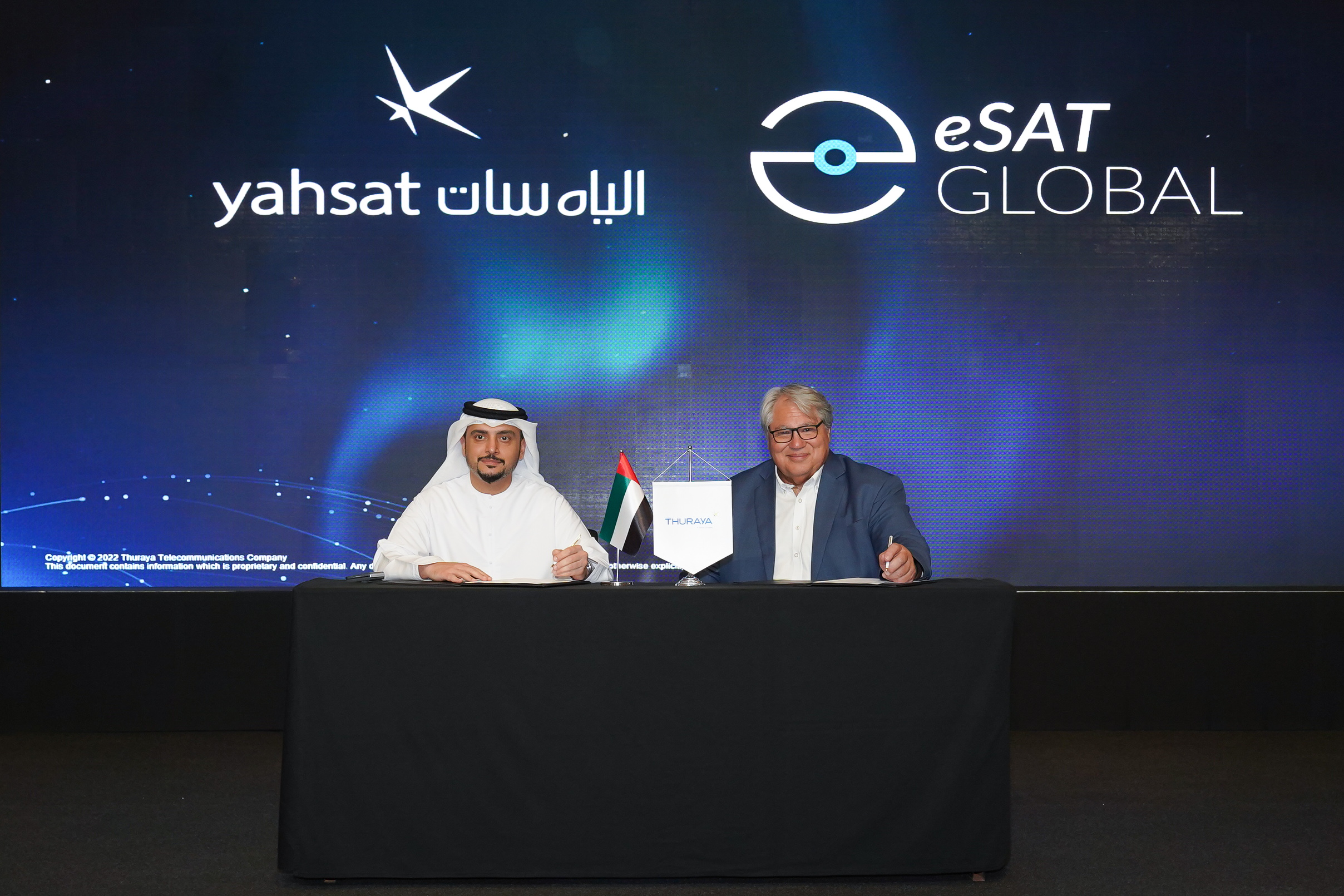TAMPA, Fla. — Emirati fleet operator Yahsat said Oct. 11 it has invested in Californian startup eSAT Global, which is developing a chip that would enable phones to connect to its satellites in geostationary orbit (GEO).
The companies did not disclose financial details about Yahsat’s acquisition of a minority stake in eSAT.
The deal includes a long-term commercial agreement for Thuraya, Yahsat’s L-band mobile satellite services business, to use eSAT’s technology to connect directly to phones and low-power internet of things (IoT) devices.
San Diego-based eSAT was founded in 2017 to create communications modules enabling tracking, monitoring, and other low-cost IoT devices to connect directly to GEO satellites where terrestrial networks are unavailable.
Last year, the startup said it was also developing a satellite-enabled text capability for emergency and “simple messaging” services.
Alongside other startups, established satellite operators have recently announced plans for an emerging direct-to-cell market, including SpaceX’s Starlink.
Most of these plans envisage leveraging small satellites in low Earth orbit (LEO), which are capable of lower latency services than spacecraft farther away in GEO.
However, drawing from existing satellites in GEO can be more cost-effective than LEO for global low-power connectivity services, eSAT says, with latency below two seconds still possible for time-sensitive applications.
“We have designed our systems to benefit from the intrinsic advantages that L-band GEO’s have over both LEO’s and other GEO’s,” eSAT CEO Rick Somerton said in a statement.
“It is very exciting for us to have Yahsat, through their investment, endorsing our belief that their GEO’s will deliver low-cost, low-power, and low-latency IoT connectivity.”
Silicon Valley startup Skylo is also developing a business to bring connectivity to IoT devices beyond the reach of terrestrial networks via third-party GEO satellites.
Skylo, which has partnered with U.K.-based fleet operator Inmarsat to use its L-band satellites, announced its own plans Sept. 7 for the direct-to-cell sector.
Direct-to-cell expansion
Smartphone makers would need to add eSAT’s custom radio-frequency chip into their phone designs, or modify existing chipsets, to give their handsets the ability to connect to partner satellites in GEO.
The startup said it is developing a communications device that would link to existing handsets, enabling them to use eSAT’s Remote Text Service (eRTS) without this chip.
Thuraya and Inmarsat supported field trials for eRTS earlier this year.
In October 2021, eSAT said it expected to launch the first commercial release of its direct-to-cell service by the end of 2022. The venture has not provided an update on this timeframe or the status of field tests.
Announcing its eSAT investment Oct. 11, Yahsat said it expects the startup will launch commercial IoT services on Thuraya’s network by the fourth quarter of 2023.
Thuraya’s L-band constellation comprises two aging satellites covering two-thirds of the globe, providing connectivity to specialized devices across commercial and government markets from Europe to the Asia Pacific. The operator relies on roaming agreements to cover the remaining third of the world that these satellites do not reach over the Americas.
Yahsat operates three broadband satellites in GEO and bought Thuraya in 2018 to push into an expanding satellite-enabled IoT market.
Yahsat ordered a next-generation L-band satellite called Thuraya-4 NGS from Airbus two years later to refresh part of Thuraya’s constellation, which SpaceX is slated to launch in 2024.
The contract with Airbus included an option for a second satellite to continue coverage over Asia that Yahsat has not initiated.
“Yahsat’s investment in eSAT, combined with Thuraya’s commercial agreement, is aligned with our belief in the outsized impact of the IoT sector for the satellite and space industry today and in the years to come,” Yahsat CEO Ali Al Hashemi said in a statement.
“Through this partnership, we will be able to serve our customers even more effectively by offering smart, reliable, and customizable solutions that will unlock new and exciting opportunities across a range of sectors.”
The IoT market is projected to grow to $525 billion over the next five years at a 22% compound annual growth rate (CAGR), Yahsat said, while satellite IoT is forecast to generate a total of $6 billion over the same period.
